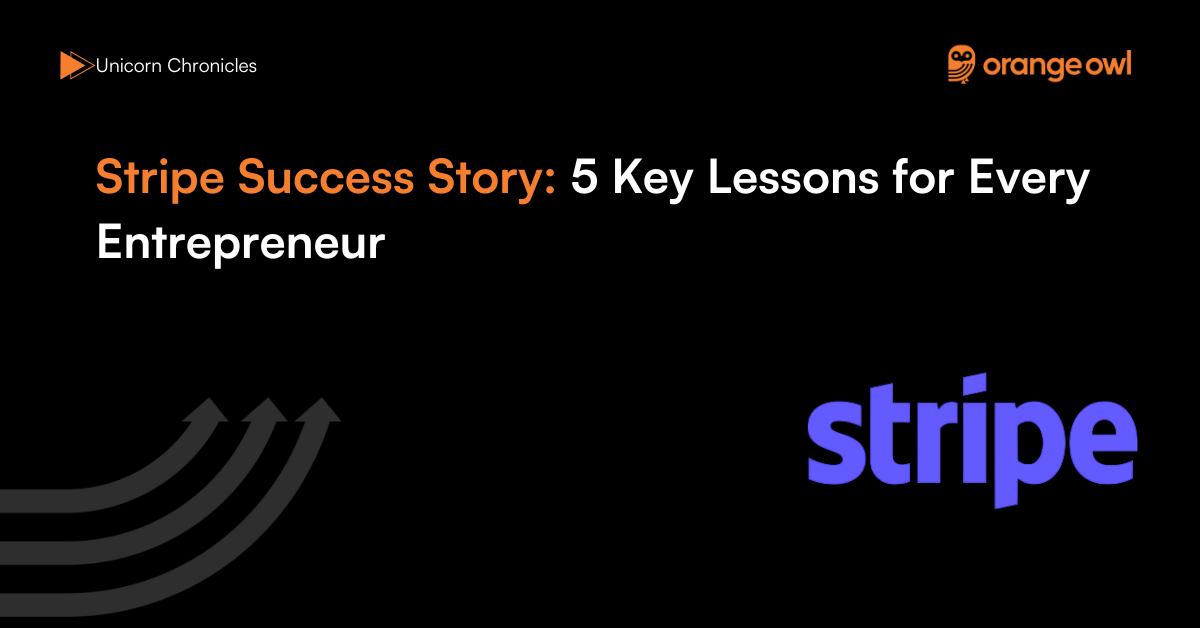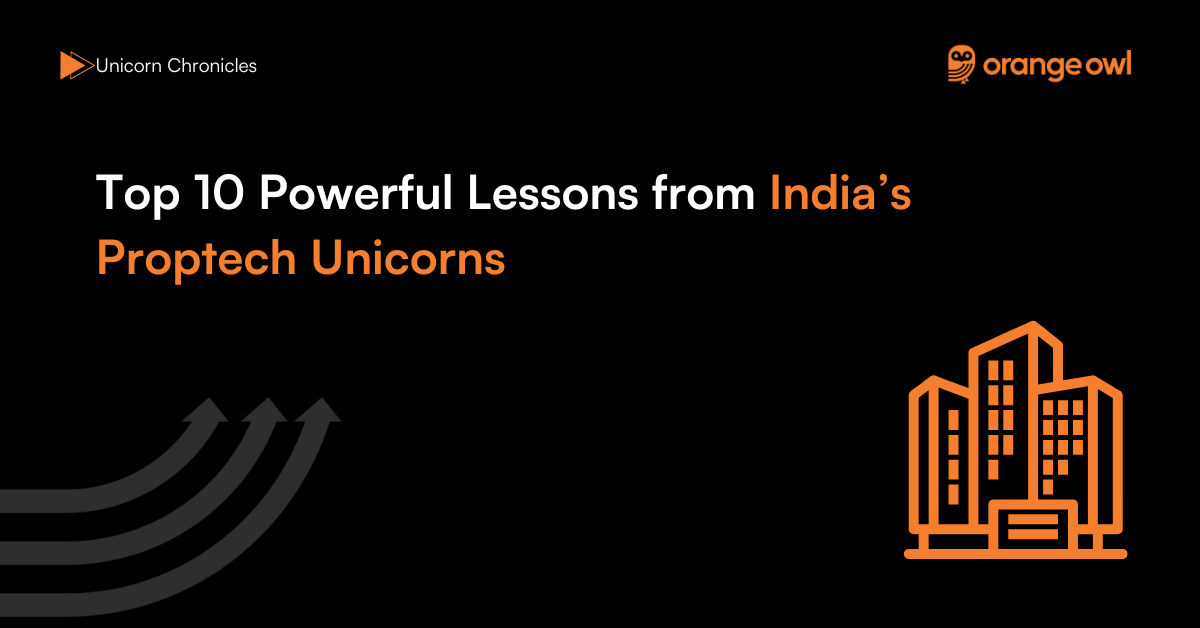The Ultimate Beginner’s Guide to B2B Marketing: A Comprehensive Overview
Vivek Goel
February 5, 2025
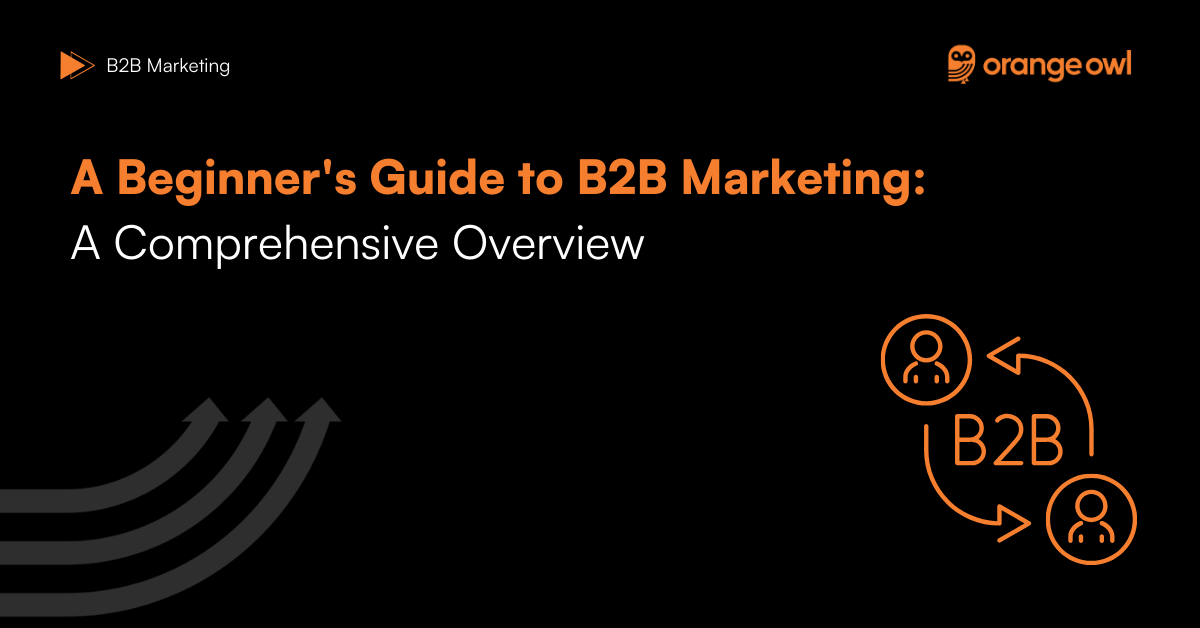
Table of Contents
Introduction: The Importance of Marketing in the Modern World
Marketing is the lifeblood of any business, essential for creating awareness, driving engagement, and ultimately converting prospects into loyal customers. According to the American Marketing Association, marketing is defined as “the activity, set of institutions, and processes for creating, communicating, delivering, and exchanging offerings that have value for customers, clients, partners, and society at large“. In today’s competitive landscape, businesses must employ sophisticated marketing strategies to stand out and thrive. Explore this ultimate beginner’s guide to B2B Marketing and gain in-depth knowledge of the B2B world.
What is Marketing?
Marketing encompasses the activities and strategies businesses use to promote their products or services, build relationships with their audience, and drive sales. It involves understanding customer needs, creating value, and effectively communicating that value to the target audience. The core components of marketing include market research, product development, pricing, distribution, and promotion.
Benefits of Marketing
- Increased Brand Awareness: Effective marketing strategies help businesses become more visible and recognizable.
- Customer Engagement: Engaging with customers through various marketing channels builds relationships and loyalty.
- Revenue Growth: By reaching a larger audience and converting leads into customers, marketing drives revenue growth.
- Competitive Advantage: Strategic marketing can differentiate a business from its competitors.
- Market Insights: Marketing research provides valuable insights into customer preferences and market trends.
What is B2B Marketing?
B2B marketing refers to the marketing practices and techniques used by companies to promote their products or services to other businesses. These businesses could be wholesalers, retailers, manufacturers, or service providers. The goal is to help these businesses improve their operations, products, or services.
Check out the glossary of all B2B Marketing terms explained with examples.
Also, Learn Why B2B Companies Fail Without Effective Marketing Strategies.
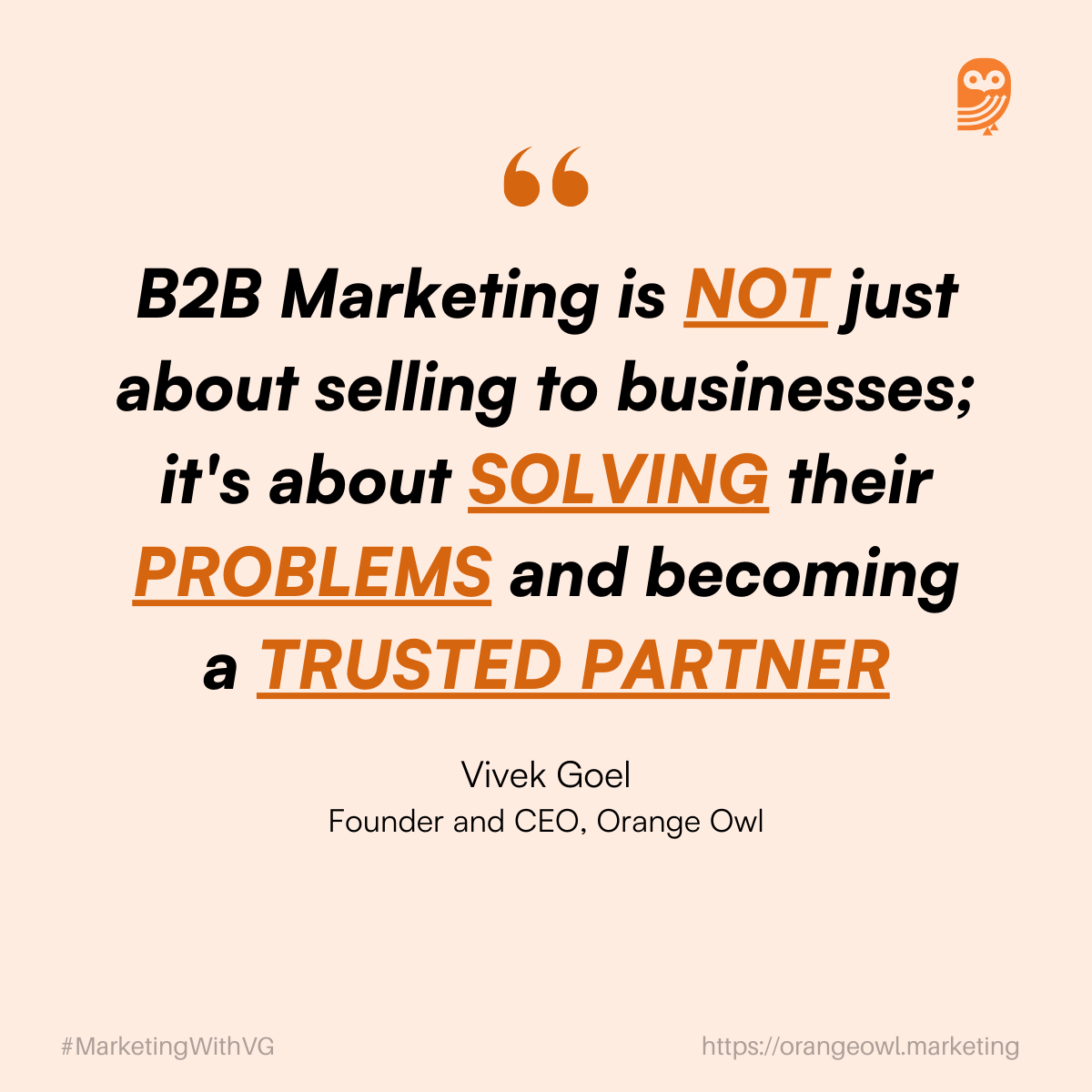
Benefits of B2B Marketing
- Long-Term Relationships: B2B marketing focuses on building lasting relationships with clients.
- Higher Order Values: Transactions often involve larger quantities and higher order values compared to B2C.
- Repeat Business: Successful B2B marketing leads to repeat purchases and ongoing contracts.
- Niche Targeting: Businesses can target specific industries or sectors with tailored marketing strategies.
- Industry Authority: Effective B2B marketing positions a company as an expert and leader in its industry.
How is B2B Marketing Different from B2C Marketing?
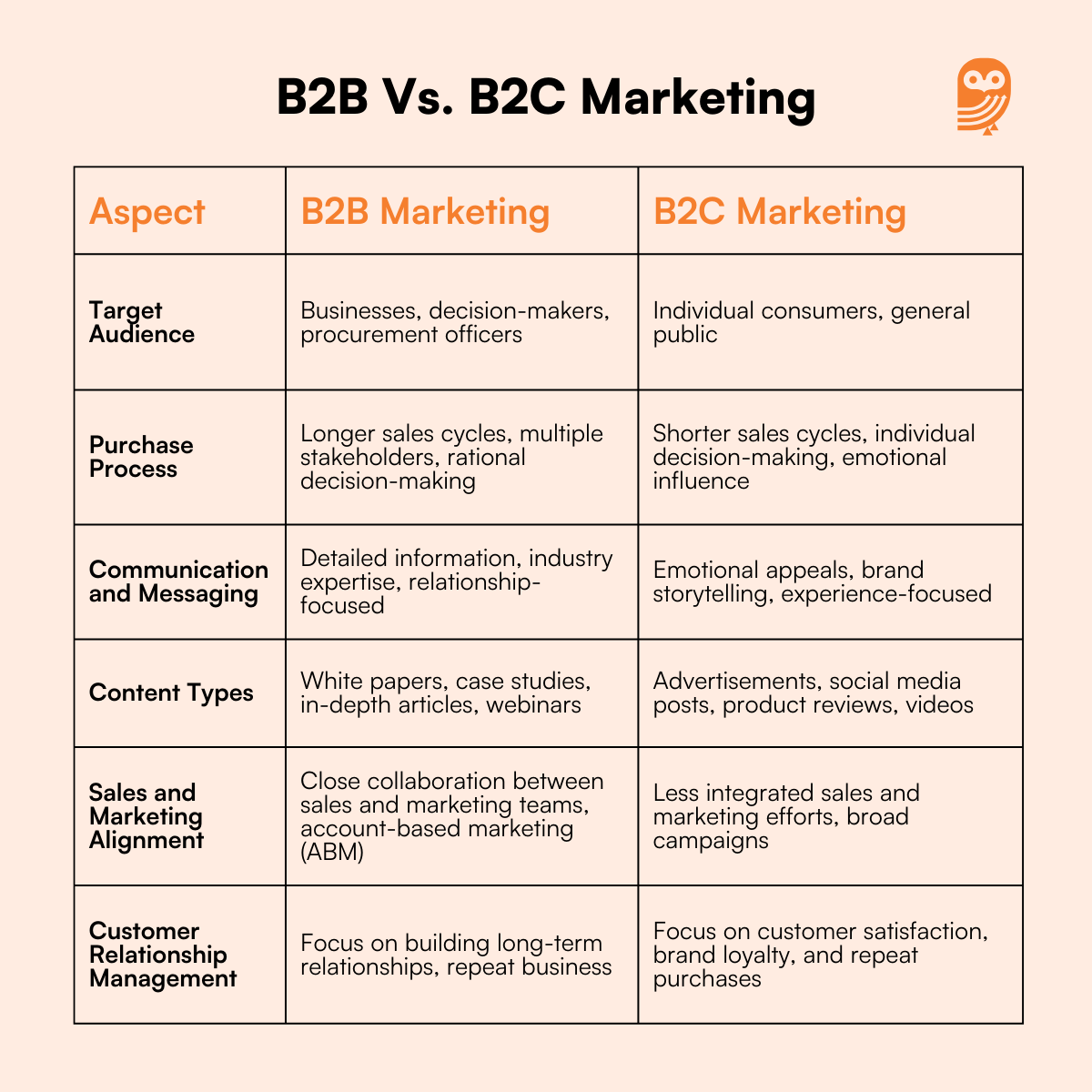
While B2B and B2C marketing share some fundamental principles, they differ significantly in terms of target audience, strategies, and outcomes.
Target Audience
- B2B Marketing: Targets businesses, focusing on decision-makers such as executives, managers, and procurement officers.
- B2C Marketing: Targets individual consumers, focusing on their personal needs, desires, and preferences.
Purchase Process
- B2B Marketing: Involves a longer sales cycle, often with multiple stakeholders and a more rational decision-making process. Purchases are usually based on business needs, efficiency, and return on investment (ROI).
- B2C Marketing: Typically involves a shorter sales cycle with quicker, emotion-driven purchasing decisions. Consumers are influenced by trends, brand loyalty, and personal preferences.
Communication and Messaging
- B2B Marketing: Emphasizes detailed information, industry expertise, and building long-term relationships. Content often includes white papers, case studies, and in-depth articles.
- B2C Marketing: Focuses on emotional appeals, brand storytelling, and creating an enjoyable customer experience. Content includes advertisements, social media posts, and product reviews.
B2B Marketing Examples
Here are some hypothetical examples from the B2B world that illustrate the use of marketing for various purposes:
Building Awareness
Company: TechSolutions Inc.
- Purpose: Building awareness of a new cybersecurity software.
- Strategy: TechSolutions Inc. launches a comprehensive digital marketing campaign that includes SEO-optimized blog posts, educational webinars, and targeted LinkedIn ads. They also collaborate with industry influencers to publish guest articles and participate in tech forums, increasing visibility among IT managers and security professionals.
Promoting Their Brand
Company: GreenEnergy Solutions
- Purpose: Promoting their brand as a leader in renewable energy solutions.
- Strategy: GreenEnergy Solutions sponsors major industry conferences and trade shows, showcasing their latest technologies and case studies. They also run a series of video ads on LinkedIn and YouTube, highlighting their innovative projects and commitment to sustainability, reinforcing their brand image among corporate clients and stakeholders.
Promoting Products or Services
Company: DataAnalytics Pro
- Purpose: Promoting a new data analytics platform.
- Strategy: DataAnalytics Pro offers free trials and personalized demos of their new platform. They create detailed case studies and white papers demonstrating the platform’s impact on business efficiency and decision-making. Email marketing campaigns targeting specific industries are also deployed, offering tailored content and highlighting key features relevant to each sector.
Building Relationships with Their Audience
Company: EnterpriseTech Solutions
- Purpose: Building long-term relationships with clients.
- Strategy: EnterpriseTech Solutions hosts exclusive networking events and roundtable discussions for their top clients. They also implement a customer loyalty program that includes regular check-ins, personalized account management, and access to a dedicated customer portal with resources, updates, and support.
Driving Sales
Company: CloudServices Co.
- Purpose: Driving sales for their cloud storage solutions.
- Strategy: CloudServices Co. utilizes account-based marketing (ABM) to target high-value accounts with personalized campaigns. Sales teams collaborate with marketing to deliver customized presentations and proposals. They also use retargeting ads to engage potential leads who have visited their website, encouraging them to take the next step in the sales funnel.
Building Thought Leadership
Company: InnovateConsulting
- Purpose: Establishing themselves as thought leaders in business consulting.
- Strategy: InnovateConsulting publishes a series of in-depth research reports and insights on emerging business trends. Their executives regularly contribute articles to industry journals and speak at high-profile conferences. They also host a podcast featuring interviews with industry experts and thought leaders, positioning themselves as a go-to source for innovative business strategies.
These hypothetical examples demonstrate how B2B companies can leverage various marketing strategies to achieve different goals, from building awareness and promoting products to driving sales and establishing thought leadership.
Types of B2B Marketing
B2B marketing encompasses various strategies and tactics, which can be broadly categorized into inbound and outbound marketing.
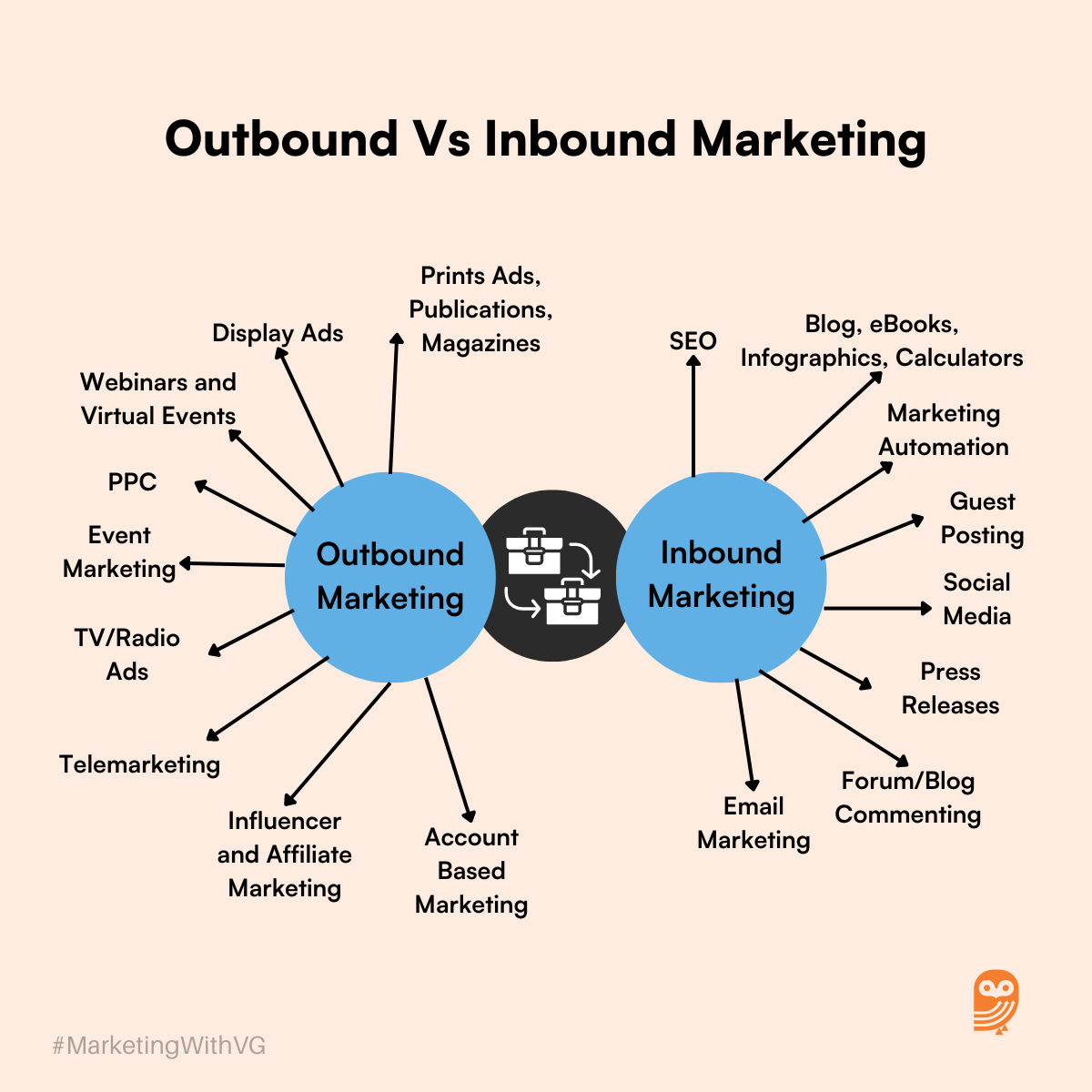
Inbound Marketing
Inbound marketing focuses on attracting potential customers through valuable content and engaging experiences. It aims to pull customers towards the business rather than pushing products or services onto them.
Key Inbound Marketing Channels
- Content Marketing: Creating and distributing valuable content such as blog posts, white papers, e-books, and case studies to attract and engage the target audience.
- Search Engine Optimization (SEO): Optimizing website content to improve visibility in search engine results and attract organic traffic.
- Social Media Marketing: Using platforms like LinkedIn, Twitter, and Facebook to share content, engage with the audience, and build brand awareness.
- Email Marketing: Sending newsletters, updates, and personalized messages to nurture leads and maintain customer relationships.
- Webinars and Live Streams: Hosting online events to share knowledge, demonstrate products, and interact with potential clients.
- Podcasts: Producing audio content to discuss industry trends, provide insights, and connect with the audience.
Outbound Marketing
Outbound marketing involves proactive outreach to potential customers through various channels. It aims to push messages out to the audience and generate leads.
Key Outbound Marketing Channels
- Cold Calling: Directly contacting potential clients via phone to introduce products or services.
- Email Campaigns: Sending targeted emails to potential leads with promotional content or offers.
- Direct Mail: Sending physical marketing materials, such as brochures or catalogs, to potential clients.
- Telemarketing: Using phone calls to promote products or services and generate leads.
- Trade Shows and Events: Participating in industry events to showcase products, network, and generate leads.
- Pay-Per-Click (PPC) Advertising: Using paid ads on search engines and social media platforms to reach potential customers.
- Television and Radio Advertising: Broadcasting ads to a wider audience through traditional media channels.
- Print Advertising: Placing ads in industry magazines, newspapers, and other print media.
Checkout Top 10 B2B Marketing Strategies Every Business Should Implement
Steps in B2B Marketing
1. Conduct Market Research
- Identify target markets and customer needs.
- Analyze competitors and industry trends.
- Use surveys, focus groups, and industry reports to gather data.
2. Develop Buyer Personas
- Create detailed profiles of ideal customers.
- Include information on demographics, job roles, pain points, and buying behavior.
- Use data from market research to inform these personas.
3. Define Your Value Proposition
- Articulate the unique benefits of your product or service.
- Focus on how your solution solves customer problems.
- Ensure the value proposition is clear, concise, and compelling.
4. Create a Marketing Strategy
- Outline goals and objectives based on business targets.
- Choose the right marketing channels (content marketing, social media, email marketing, etc.).
- Develop a content plan that includes blogs, white papers, case studies, and videos.
- Finalize marketing roles and responsibilities of different departments.
5. Set a Marketing Budget
- Analyze past performance and allocate funds based on expected ROI.
- Ensure the budget covers all planned marketing activities, including tools, content creation, and advertising.
- Leave room for flexibility to take advantage of unexpected opportunities or address challenges.
6. Implement Account-Based Marketing (ABM)
- Identify high-value target accounts.
- Personalize marketing efforts to address the specific needs of these accounts.
- Coordinate sales and marketing teams to ensure alignment and consistency.
7. Develop and Distribute Content
- Create high-quality, relevant content that addresses customer pain points.
- Use various formats: blogs, webinars, infographics, videos, and podcasts.
- Distribute content through your website, social media, email, and other channels.
8. Optimize for Search Engines (SEO)
- Conduct keyword research to identify relevant terms and phrases.
- Optimize website content, meta descriptions, and tags.
- Build backlinks from authoritative websites to enhance domain authority.
9. Engage on Social Media
- Select appropriate platforms (LinkedIn, Twitter, Facebook).
- Share valuable content and industry insights.
- Engage with your audience through comments, likes, and shares.
10. Execute Email Marketing Campaigns
- Build an email list through lead magnets and subscriptions.
- Create segmented email campaigns targeting different buyer personas.
- Use automated workflows to nurture leads and move them through the sales funnel.
11. Utilize Marketing Automation Tools
- Implement tools like HubSpot, Marketo, or Pardot.
- Automate repetitive tasks such as email campaigns, social media posting, and lead scoring.
- Personalize marketing efforts at scale using data and analytics.
12. Measure and Analyze Performance
- Track key metrics such as website traffic, conversion rates, and ROI.
- Use analytics tools to gain insights into campaign performance.
- Regularly review and adjust strategies based on data and feedback.
13. Build and Maintain Relationships
- Focus on long-term relationships rather than one-time sales.
- Provide excellent customer service and support.
- Regularly follow up with clients to ensure satisfaction and encourage repeat business.
14. Establish Thought Leadership
- Publish thought leadership content such as research reports, white papers, and opinion pieces.
- Speak at industry conferences and participate in webinars.
- Engage with industry influencers and collaborate on content.
For more in-depth insights and strategies, explore our other blog posts on specific aspects of B2B marketing. From SEO tips to social media strategies, and understanding key B2B marketing glossary terms, our comprehensive resources will help you master the art of B2B marketing.
Checkout the Ultimate Guide to Top 10 Essential B2B Marketing Tools
Trends in B2B Marketing
Staying ahead of trends is essential for B2B marketers. Here are some current trends shaping the industry:
1. Artificial Intelligence (AI) and Machine Learning
AI and machine learning are transforming B2B marketing by enabling more personalized and efficient strategies. Applications include:
- Predictive Analytics: Using data to predict future customer behavior and optimize marketing efforts.
- Chatbots: Providing instant customer support and guiding prospects through the sales funnel.
- Personalization: Delivering tailored content and recommendations based on user behavior and preferences.
2. Account-Based Marketing (ABM)
ABM continues to gain traction as businesses recognize the value of targeting specific accounts with personalized campaigns. This trend is driven by:
- Improved Targeting: Leveraging data and analytics to identify high-value accounts.
- Enhanced Collaboration: Aligning sales and marketing teams for a more coordinated approach.
- Personalized Content: Creating highly relevant content that resonates with target accounts.
3. Video Marketing
Video Marketing is becoming increasingly important in B2B marketing, offering a dynamic way to engage audiences. Effective uses of video include:
- Product Demos: Showcasing products in action to highlight features and benefits.
- Webinars and Live Streams: Providing valuable insights and fostering real-time engagement.
- Customer Testimonials: Featuring satisfied customers to build trust and credibility.
4. Data-Driven Marketing
Data-driven marketing is essential for making informed decisions and optimizing campaigns. Key components include:
- Analytics Tools: Using platforms like Google Analytics and HubSpot to track performance and gain insights.
- A/B Testing: Experimenting with different strategies to determine what works best.
- Customer Segmentation: Dividing your audience into segments based on behavior, demographics, and preferences.
5. Content Personalization
Personalization is critical for engaging B2B audiences. Strategies include:
- Dynamic Content: Tailoring website content based on user behavior and preferences.
- Segmented Email Campaigns: Sending targeted emails to specific segments of your audience.
- Personalized Landing Pages: Creating landing pages that address the unique needs of different audience segments.
Challenges and Pitfalls in B2B Marketing
B2B marketing comes with its own set of challenges. Here are some common pitfalls and how to avoid them:
1. Long Sales Cycles
B2B sales cycles are often long and complex, involving multiple stakeholders. To manage this:
- Nurture Leads: Use email marketing and content to keep prospects engaged.
- Provide Value: Offer valuable content and solutions at each stage of the sales funnel.
- Stay Persistent: Follow up regularly without being overly aggressive.
2. Targeting the Right Audience
Reaching the right audience is critical for success. Strategies include:
- Buyer Personas: Develop detailed personas to understand your target audience.
- Data and Analytics: Use data to identify and target the most promising prospects.
- ABM: Focus on high-value accounts with personalized campaigns.
3. Measuring ROI
Measuring the ROI of B2B marketing efforts can be challenging. To address this:
- Set Clear Goals: Define specific, measurable objectives for your campaigns.
- Track Metrics: Use analytics tools to monitor performance and track key metrics.
- Adjust Strategies: Be prepared to adjust your strategies based on data and insights.
4. Keeping Up with Trends
The marketing landscape is constantly evolving, making it essential to stay up-to-date with trends. To do this:
- Continuous Learning: Invest in ongoing education and training for your marketing team.
- Industry Events: Attend conferences and webinars to stay informed.
- Networking: Connect with industry peers to share insights and best practices.
Checkout Top B2B Marketing Myths here.
Expert Tips and Actionable Items
To help you succeed in B2B marketing, here are some expert tips and actionable items:
1. Develop a Strong Value Proposition
- Identify Your Unique Selling Points: Determine what sets your business apart from competitors.
- Communicate Clearly: Ensure your value proposition is clear and compelling.
- Focus on Benefits: Highlight the benefits your products or services offer to other businesses.
2. Leverage Marketing Automation
- Automate Repetitive Tasks: Use tools like HubSpot and Marketo to automate tasks such as email marketing and lead nurturing.
- Personalize at Scale: Use automation to deliver personalized content to a large audience.
- Measure Performance: Track the performance of your automated campaigns to identify areas for improvement.
3. Invest in High-Quality Content
- Create Valuable Content: Focus on creating content that provides real value to your audience.
- Diversify Content Formats: Use a mix of blog posts, videos, white papers, and case studies.
- Update Regularly: Keep your content fresh and relevant by updating it regularly.
4. Focus on Building Relationships
- Engage with Your Audience: Use social media and email marketing to engage with your audience and build relationships.
- Provide Exceptional Customer Service: Ensure your customer service team is responsive and helpful.
- Follow Up: Regularly follow up with leads and customers to maintain relationships.
5. Utilize Data and Analytics
- Track Key Metrics: Monitor metrics such as website traffic, conversion rates, and customer acquisition costs.
- Analyze Data: Use analytics tools to gain insights into your audience and campaign performance.
- Make Data-Driven Decisions: Use data to inform your marketing strategies and decisions.
Conclusion
B2B marketing is a complex but rewarding field, offering businesses the opportunity to connect with other companies, build strong relationships, and drive growth. By understanding the unique aspects of B2B marketing and implementing effective strategies, businesses can navigate the challenges and capitalize on the opportunities in this dynamic landscape.
To stay ahead, it’s essential to keep up with trends, leverage technology, and continuously optimize your efforts. Whether you’re new to B2B marketing or looking to refine your approach, this guide provides a solid foundation for success.
For more in-depth insights and strategies, explore our other blog posts on specific aspects of B2B marketing. From SEO tips to social media strategies, and understanding key B2B marketing glossary terms, our comprehensive resources will help you master the art of B2B marketing.
Check out the list of top marketing agencies in India and Hyderabad.
Top Frequently Asked Questions (FAQs) on Beginner’s Guide to B2B Marketing
Digital transformation in B2B marketing involves adopting digital tools and technologies to improve marketing efficiency, enhance customer experiences, and gain insights through data analytics. This shift enables businesses to engage with clients more effectively through digital channels like social media, email, and SEO.
Customer journey mapping helps B2B marketers understand the steps their clients take from awareness to purchase. By identifying touchpoints and pain points, businesses can optimize their marketing strategies to provide a more seamless and personalized experience, ultimately improving conversion rates.
Creating a B2B marketing budget involves analyzing past performance, setting clear objectives, and allocating funds to the most effective channels. It’s important to include flexibility for unexpected opportunities or challenges, and to regularly review and adjust the budget based on campaign performance and market changes.
B2B companies can leverage influencer marketing by partnering with industry experts, thought leaders, and key opinion leaders who have a strong following within the target market. These influencers can endorse products, share valuable insights, and enhance credibility, thereby driving engagement and trust.
Effective lead generation strategies for B2B marketing include content marketing, SEO, social media engagement, webinars, email marketing, and pay-per-click advertising. Additionally, using lead magnets like e-books, white papers, and free trials can attract potential clients and collect valuable contact information.
Branding is crucial in B2B marketing as it establishes a company’s identity, builds trust, and differentiates it from competitors. A strong brand communicates reliability and expertise, making it easier to attract and retain clients. Consistent branding across all channels reinforces the company’s values and mission.
Mobile marketing is increasingly important in B2B strategies as decision-makers frequently use mobile devices to research and interact with businesses. Ensuring that websites, emails, and content are mobile-friendly enhances user experience and accessibility, potentially leading to higher engagement and conversions.
B2B marketers can measure customer satisfaction and loyalty through surveys, Net Promoter Scores (NPS), customer feedback, and retention rates. Analyzing these metrics helps identify areas for improvement and develop strategies to enhance customer relationships and loyalty.
Key elements of a successful B2B marketing campaign include a clear objective, an understanding of the target audience, compelling messaging, integrated marketing channels, and measurable KPIs. Continuous monitoring and optimization based on performance data are also crucial for success.
B2B companies can use data privacy regulations to their advantage by demonstrating their commitment to protecting client data, which builds trust and credibility. By being transparent about data practices and ensuring compliance with regulations like GDPR and CCPA, businesses can differentiate themselves and reassure clients of their dedication to privacy and security.

